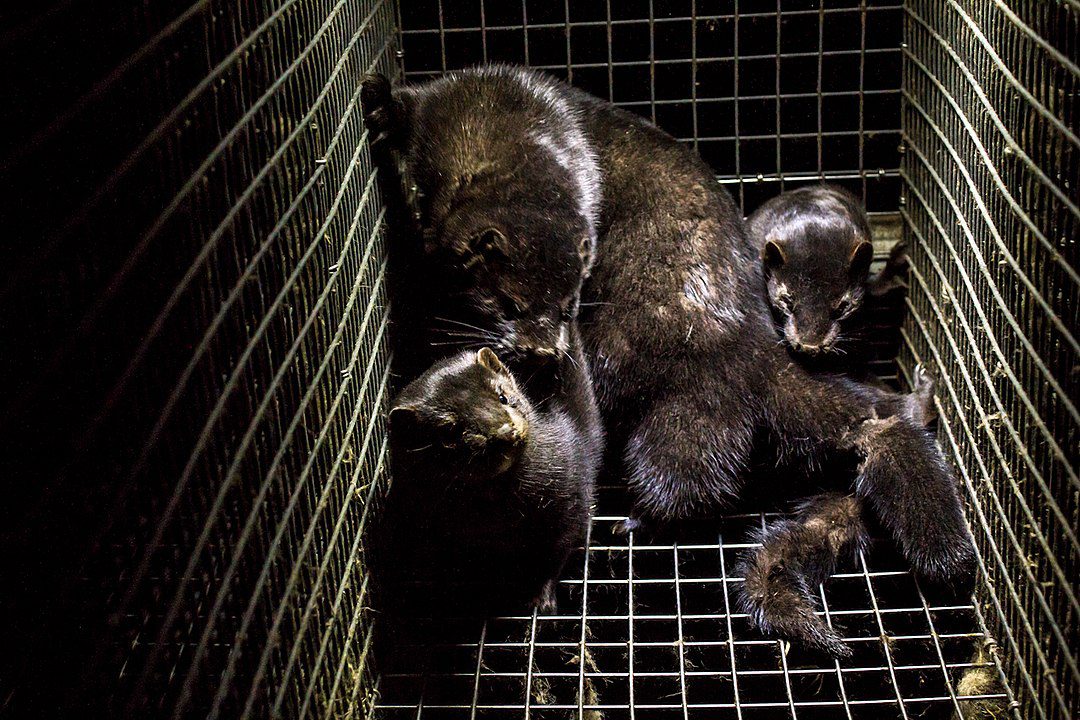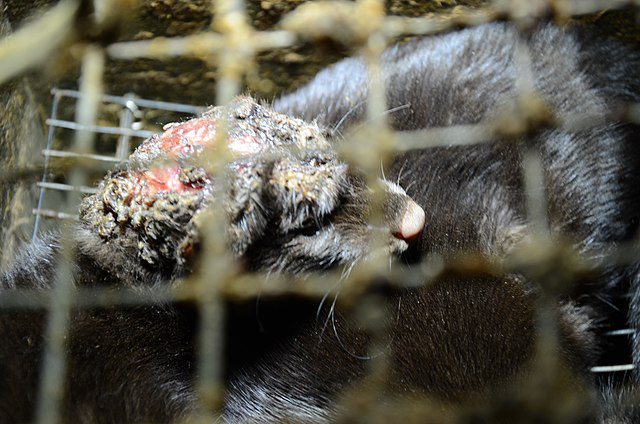
Denmark: Sars-CoV-2 coronavirus spike mutations arising in Danish mink – the Cluster 5 report
This study investigates the amino acid changes in the spike surface glycoprotein that appeared during this outbreak [in mink] and their effect on the antigenicity of the SARS-CoV-2 virus.
Spike mutations
Within the infected mink, the SARS-CoV-2 virus mutated, giving rise to several amino acid changes in the spike protein. The first was a tyrosine to phenylalanine at amino acid 453 (Y453F), a mutation that also appeared during the Dutch mink farm outbreaks. It is a conservative amino acid substitution in the receptor binding domain that directly contacts the host ACE2 receptor at amino acid 34 (Wang et al). This ACE2 contact position differs between human and mink (histidine [34H] in humans and tyrosine [34Y] in mink and other mustelids (Damas et al)), which suggests that Y453F is an adaptation mutation to mink ACE2. Importantly, 453F increases affinity for human ACE2, which may explain its successful introduction and establishment in humans.
Following the appearance of 453F, additional spike mutations were observed in minks and the humans epidemiologically linked to the infected mink farms (Fig. 1). These include: i) 69-70deltaHV – a deletion of a histidine and valine at amino acid positions 69 and 70 in the N-terminal domain of the S1 subunit; ii) I692V – a conservative substitution at position 692 that is located seven amino acids downstream of the furin cleavage site; iii) S1147L – a non-conservative substitution at position 1147 in the S2 subunit; and iv) M1229I – a conservative substitution located within the transmembrane domain.
Denmark’s SSI: The Cluster 5 report (PDF download)
Mink: 100% infection, recovery and then 75% re-infection of farmed mink
Mink: 100% infection, recovery and then 75% re-infection of farmed mink
Mink: 100% infection, recovery and then 75% re-infection of farmed mink
Image by Dzīvnieku brīvība – Baltic Devon Mink 09, CC BY 2.0, https://commons.wikimedia.org/w/index.php?curid=87445687Link





